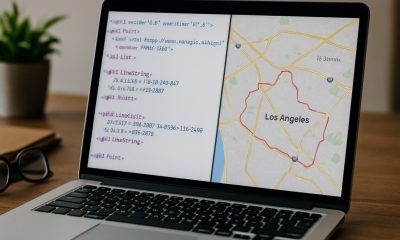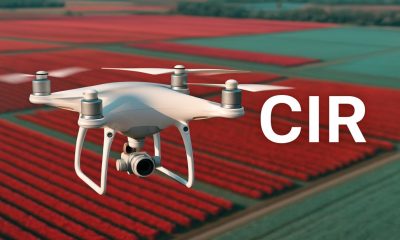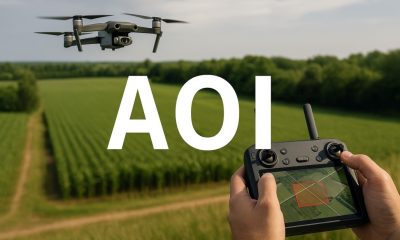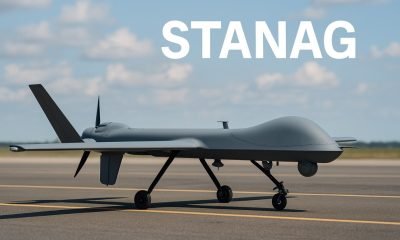- Acronym Guide
- AAM
- ABS
- AC
- ACAS
- ADS-B
- AFAC
- AGL
- AI
- AIM
- ALS
- AM
- AMA
- ANSP
- AOI
- APPI
- AUV
- AUVSI
- ARPAS-UK
- ASTM
- ATC
- BVLOS
- CAA
- CAAC
- CAB
- CASA
- CATT
- CBO
- CBR
- CBRN
- CDMA
- CDR
- CFR
- CIR
- COA
- COMINT
- CORS
- COTP
- COTR
- CPTED
- CV
- C2
- DAA
- DEM
- DFI
- DFS
- DGCA
- DHS
- DOD
- DPA
- DPEs
- DRG
- DRO
- DSM
- DSMX
- DSP
- DSSS
- DTM
- EASA
- EFT
- EO
- EOD
- EO/IR
- ELINT
- EMI
- ESC
- EVLOS
- eVTOLs
- FAA
- FCC
- FCS
- FHSS
- FICCI
- FLIR
- FOB
- FOV
- FPS
- FPV
- GBDAA
- GCP
- GCS
- GDPR
- GML
- GNSS
- GPS
- GSD
- GVC
- HDR
- HOGE
- IACRA
- ICAO
- ICS
- IMU
- INS
- IR
- ISA
- ISR
- ITU
- JARUS
- LAAMS
- LAANC
- LAATM
- LAI
- LBA
- LIDAR
- LOS
- LSALT
- MAC
- MAVLink
- MLIT
- MMS
- MSL
- MTOM
- NDAA
- NCSL
- NFZ
- NIST
- NMEA
- NOTAM
- NPA
- NPRM
- NTIA
- OBIA
- OEM
- OFDM
- OOP
- PASM
- PAV
- PCV
- PdM
- PEC
- PIC
- PID
- PIPL
- PLD
- PM
- PN
- PPK
- PPS
- PSM
- PWM
- UAM
- UAOP
- UAS
- UASTM
- UAV
- UCAVs
- UHD
- UHF
- USV
- UTM
- RAIM
- RCC
- RCS
- RFI
- ReOC
- RePL
- RMS
- ROI
- RPAS
- RPC
- RTH
- RTK
- SaR
- SAR
- SARP
- SBAS
- S.Bus
- SBIR
- SEDENA
- SfM
- SFOC
- SIGINT
- SLAM
- SMS
- SORA
- STANAG
- STTR
- sUAS
- TCAS
- TCCA
- TFR
- TIN
- TOF
- TP
- TPS
- TSA
- VHF
- VLOS
- VTOL
Drone Acronyms
What is UAM (Urban Air Mobility) & How Does it Work?
Published
1 month agoon
By
Jacob StonerTable Of Contents

Definition
Urban Air Mobility (UAM) refers to the use of advanced, often autonomous, aerial vehicles—such as drones and air taxis—for the transportation of people, goods, or services within and around urban environments. UAM systems are designed to alleviate ground congestion and improve urban logistics by integrating aircraft into city airspace through coordinated, technology-driven frameworks.
Usage
UAM includes a range of aircraft types, from small delivery drones to large electric vertical takeoff and landing (eVTOL) vehicles. These platforms are used for package delivery, surveillance, emergency response, and future passenger transport. In city settings, UAM operations rely on advanced airspace monitoring, Unmanned Traffic Management (UTM), and digital infrastructure to maintain safe and scalable flight networks.
Relevance to the Industry
As cities prepare for autonomous air traffic, UAM directly influences how drone monitoring systems evolve. UTM platforms are being adapted to handle higher volumes of low-altitude traffic, support dynamic routing, and ensure separation between drones, air taxis, and existing aircraft. For operators, staying aligned with UAM policies is crucial for flying in regulated metro airspace. Moreover, UAM is shaping regulations for Remote ID, BVLOS, and operational risk assessment within populated areas.
How Does UAM (Urban Air Mobility) Work?
Urban Air Mobility (UAM) operates through a blend of aircraft technologies, real-time digital infrastructure, and coordinated regulatory frameworks to enable safe, efficient aerial operations in densely populated areas. At its core, UAM relies on connected systems that allow drones and eVTOL vehicles to navigate complex city environments autonomously or semi-autonomously. Here’s how it works:
Aircraft Deployment in Urban Environments
UAM platforms include small drones for deliveries and larger passenger-grade eVTOL aircraft. These vehicles are designed for vertical takeoff and landing, allowing them to operate in tight urban spaces without the need for traditional runways. UAM craft are often electric-powered, reducing noise and emissions for compatibility with city life.
Flight Planning and Routing
Operators submit flight plans to a UTM (Unmanned Traffic Management) system, which verifies airspace availability, identifies nearby restrictions, and assigns safe, optimized routes. These plans account for factors like building height, no-fly zones, temporary flight restrictions (TFRs), and dynamic weather conditions.
Real-Time Monitoring and Traffic Coordination
Once airborne, each vehicle continuously transmits position, altitude, speed, and system status to the UTM platform. This system coordinates multiple aircraft at once—both manned and unmanned—to ensure they remain safely separated. Conflict resolution algorithms can reroute flights instantly if another drone, aircraft, or hazard enters the same airspace corridor.
Digital Infrastructure and Connectivity
UAM systems rely on high-bandwidth, low-latency connections to maintain real-time communication between aircraft, ground control, and regulators. This connectivity allows rapid data exchange for traffic updates, emergency procedures, and vehicle diagnostics.
Landing Zones and Vertiports
Vehicles land at designated sites such as smart rooftops, vertiports, or mobile pads. These locations may include automated charging stations, passenger loading areas, or parcel handoff points. Ground sensors and communications systems verify the landing zone is clear and safe before final descent.
Integration with City Infrastructure and Services
UAM does not function in isolation. It integrates with emergency services, traffic control, logistics platforms, and smart city systems. For example, in a medical emergency, an eVTOL ambulance could share location data with hospitals, law enforcement, and UTM controllers in real time to coordinate safe passage.
By combining autonomous aircraft, digital airspace management, and smart infrastructure, Urban Air Mobility creates a scalable framework for low-altitude flight in cities. It transforms how drones operate in metropolitan areas and sets the stage for a new class of air-based transportation and logistics services.
Example in Use
“The city’s Urban Air Mobility (UAM) program enabled coordinated drone deliveries and test flights of passenger eVTOLs, all monitored in real time through a shared UTM system.”
Frequently Asked Questions about UAM (Urban Air Mobility)
How is UAM different from general drone operations?
>>>>>>>>>>>>>>>>>>>>>>>>>>>>>>>>UAM includes a wider ecosystem of aerial vehicles—including passenger transport—and focuses specifically on integrating them into dense, low-altitude urban airspace through infrastructure, policy, and digital coordination.
What types of drones or aircraft are part of UAM?
Delivery drones
eVTOL aircraft for passengers or cargo
Surveillance UAVs
Public safety response vehicles (e.g., for medical transport)
What technologies support UAM in cities?
Unmanned Traffic Management (UTM) platforms
5G or satellite-based communication systems
Geofencing, Remote ID, and AI-based routing
Infrastructure like vertiports and smart landing zones
For examples of these acronyms visit our Industries page.
As the CEO of Flyeye.io, Jacob Stoner spearheads the company's operations with his extensive expertise in the drone industry. He is a licensed commercial drone operator in Canada, where he frequently conducts drone inspections. Jacob is a highly respected figure within his local drone community, where he indulges his passion for videography during his leisure time. Above all, Jacob's keen interest lies in the potential societal impact of drone technology advancements.











